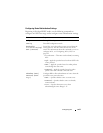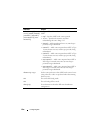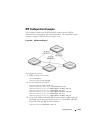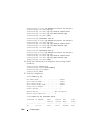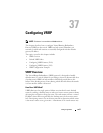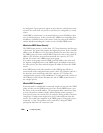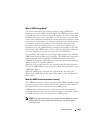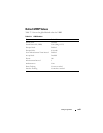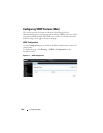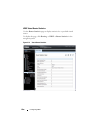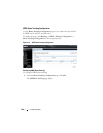
Configuring VRRP 1219
What Is VRRP Accept Mode?
The accept mode allows the switch to respond to pings (ICMP Echo
Requests) sent to the VRRP virtual IP address. The VRRP specification (RFC
3768) indicates that a router may accept IP packets sent to the virtual router
IP address only if the router is the address owner. In practice, this restriction
makes it more difficult to troubleshoot network connectivity problems. When
a host cannot communicate, it is common to ping the host's default gateway
to determine whether the problem is in the first hop of the path to the
destination. When the default gateway is a virtual router that does not
respond to pings, this troubleshooting technique is unavailable. In the Dell
Networking switch VRRP feature, you can enable Accept Mode to allow the
system to respond to pings that are sent to the virtual IP address.
This capability adds support for responding to pings, but does not allow the
VRRP master to accept other types of packets. The VRRP master responds to
both fragmented and un-fragmented ICMP Echo Request packets. The
VRRP master responds to Echo Requests sent to the virtual router's primary
address or any of its secondary addresses.
Members of the virtual router who are in backup state discard ping packets
destined to VRRP addresses, just as they discard any Ethernet frame sent to a
VRRP MAC address.
When the VRRP master responds with an Echo Reply, the source IPv4
address is the VRRP address and source MAC address is the virtual router's
MAC address.
What Are VRRP Route and Interface Tracking?
The VRRP Route/Interface Tracking feature extends VRRP capability to allow
tracking of specific routes and interface IP states within the router that can
alter the priority level of a virtual router for a VRRP group.
VRRP interface tracking monitors a specific interface IP state within the
router. Depending on the state of the tracked interface, the feature can alter
the VRRP priority level of a virtual router for a VRRP group.
NOTE: An exception to the priority level change is that if the VRRP group is the IP
address owner, its priority is fixed at 255 and cannot be reduced through the
tracking process.



